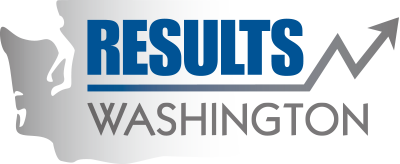Archived: Stream habitat opened
Washingtonians rely on salmon for food, recreation, jobs, cultural identity, and social tradition. These iconic fish evoke the best Washington has to offer – pristine water, rich landscapes, a healthy environment, and a thriving natural resource economy. As Washington’s population has grown, its salmon have dwindled. By 1999, wild salmon had disappeared from about 40 percent of their historic breeding ranges in Oregon, Washington, Idaho, and California. In Washington, the numbers had dwindled so much that salmon and bull trout were listed as threatened or endangered in nearly three-fourths of the state. The loss and fragmentation of salmon habitat due to fish passage barriers has contributed to the decline of salmon populations.
Barriers to fish passage,in the form of road culverts, dams, dikes, and other obstructions, reduces the distribution and stream habitat available to fish, including salmon and steelhead. In particular, the inability of fish to access upstream spawning and rearing areas results in decreased production and in some cases can eliminate fish populations altogether.
Additionally, lack of stream flow, due to surface water withdrawals, also constitutes a significant barrier to fish passage in many locations around Washington. Surface water diversions that are not properly screened to keep juvenile fish out can result in injury and direct mortality to fish.
Two of the most vital salmon recovery tools include the correction of human-made fish passage barriers and fish protection through properly screening surface water diversions.
Washington continues to make progress in making habitat available to fish by removing fish passage barriers at road crossings. This trend started in 1999 with two landmark laws: The Forests and Fish Law, and the Salmon Recovery Act. Since then, more than 5,000 barriers have been removed which has opened more than 5,000 miles of habitat to fish statewide. Although there are limited data to assess the amount of habitat that remains blocked, the Department of Fish and Wildlife estimate that perhaps 30,000 fish passage barriers currently exist at road crossings throughout Washington.
Additionally, Twenty-one northwest Washington tribes asked the U.S. District Court to find that the State of Washington has a treaty-based duty to preserve fish runs, and sought to compel the state to repair or replace culverts that impede salmon migration. The case area is that portion of the State of Washington west of the Cascade Mountains and north of the Columbia River drainage area, and includes the American portion of the Puget Sound watershed, the watersheds of the Olympic Peninsula north of the Grays Harbor watershed, and the off-shore waters adjacent to those areas. The court ruled in favor of the tribes and a federal court injunction, issued in March 2013, requires the state to significantly increase the effort for removing state-owned culverts that block habitat for salmon and steelhead by 2030. The U.S. District Court injunction affects: Washington State Department of Transportation, Washington State Department of Natural Resources, Washington State Department of Fish and Wildlife, Washington State Parks and Recreation Commission.
WDFW has completed its culvert injunction list. State Parks and the Department of Natural Resources are very near complete with their culvert injunction requirements. When complete, a total of 180 fish passage barriers will have been corrected through an investment by the state of $55.3 million.
The state recognized that fish must have access to theirspawning areas, and it created the Brian Abbott Fish Barrier Removal Board (FBRB)to create a holistic, strategic, statewide approach to removing barriers andrestoring passage. WDFW chairs the FBRB (HB 2251) which is coordinating barrier repairs statewide tomaximize fish production benefits.
WDFW fish passage inventories lead toidentification and assessment of in-stream features and prioritization of fishpassage barriers based on amount, quality, and species utilization of habitatupstream of the barrier. By prioritizing barriers, we develop a strategy thathelps ensure financial investments that have the largest benefit to salmon andsteelhead are considered first. For moreinformation on the FBRB, click on this link: http://wdfw.wa.gov/about/advisory/fbrb/
The 14 Regional Fisheries Enhancement Groups (RFEGs) share theunique role of working within their own communities across the state to recoversalmon. The RFEGs have a common goal of restoring salmon populations andhabitat to their regions, relying on support in local communities. For moreinformation on RFEGs, click on this link: http://wdfw.wa.gov/about/volunteer/rfeg/
For additional information about how salmon are doing inWashington and in your community, visit the State of Salmon in Watersheds Website, which provides detailed information and data about fish numbers,watershed health, and implementation of salmon recovery plans. Click on thislink to go to this web site: http://stateofsalmon.wa.gov/
WDFW is partnering with the Washington State Recreation andConservation Office and the Washington Department of Natural Resources toimplement the Family Forest Fish Passage Program (FFFPP). This program is an incentivebased program that assists small forest landowners with correcting their fishpassage barrier culverts. Since 2003, the FFFPP has opened over 947 miles ofstream for salmon to spawn, feed and grow. For more information on this program,click on these links: http://www.dnr.wa.gov/BusinessPermits/Topics/SmallForestLandownerOffice/Pages/fp_sflo_fffpp.aspx and http://www.youtube.com/watch?v=0m0DqpZzBU4&feature=youtu.be
